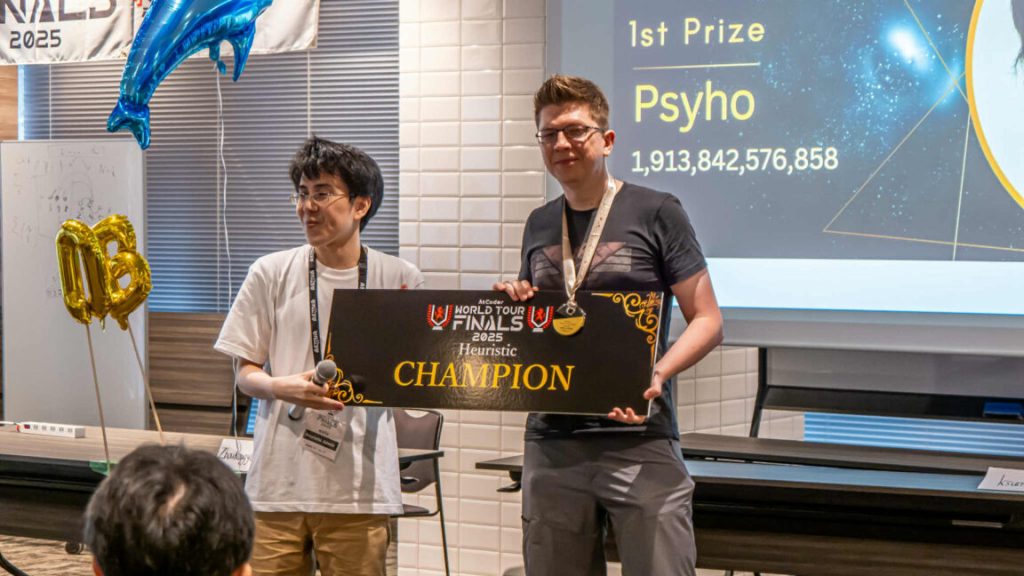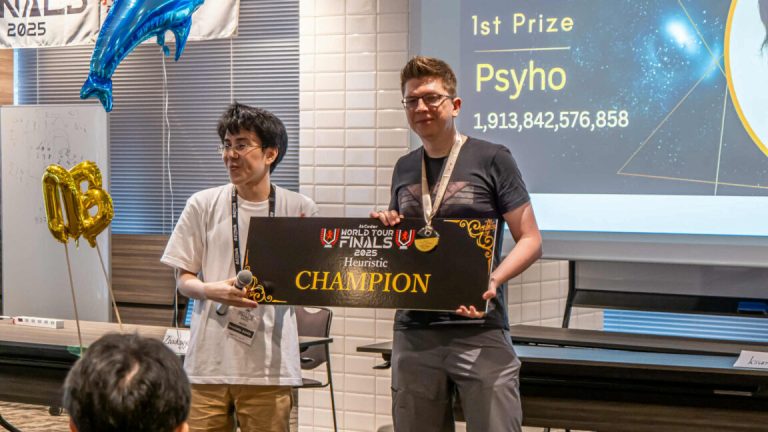
Whereas Dębiak gained 500,000 yen and survived his ordeal higher than the legendary metal driver, the AtCoder World Tour Finals pushes people and AI fashions to their limits by way of advanced optimization challenges that haven’t any good answer—solely incrementally higher ones.
Coding marathon assessments human endurance in opposition to AI effectivity
The AtCoder World Tour Finals represents one among aggressive programming’s most unique occasions, inviting solely the highest 12 programmers worldwide based mostly on their efficiency all through the earlier yr. The Heuristic division focuses on “NP-hard” optimization issues. In programming, heuristics are problem-solving strategies that discover good-enough options by way of shortcuts and educated guesses when good solutions would take too lengthy to calculate.
All rivals, together with OpenAI, have been restricted to equivalent {hardware} supplied by AtCoder, guaranteeing a degree taking part in discipline between human and AI contestants. In line with the contest guidelines, individuals may use any programming language out there on AtCoder, with no penalty for resubmission however a compulsory five-minute wait between submissions.

The ultimate contest outcomes confirmed Psyho ending with a rating of 1,812,272,558,909 factors, whereas OpenAI’s mannequin (listed as “OpenAIAHC”) scored 1,654,675,725,406 factors—a margin of roughly 9.5 p.c. OpenAI’s synthetic entrant, a customized simulated reasoning mannequin much like o3, positioned second total, forward of 10 different human programmers who had certified by way of year-long rankings.
OpenAI characterised the second-place end as a milestone for AI fashions in aggressive programming. “Fashions like o3 rank among the many top-100 in coding/math contests, however so far as we all know, that is the primary top-3 placement in a premier coding/math contest,” an organization spokesperson mentioned in an e-mail to Ars Technica. “Occasions like AtCoder give us a solution to check how properly our fashions can motive strategically, plan over very long time horizons, and enhance options by way of trial and error—similar to a human would.”






